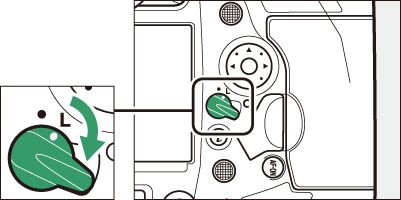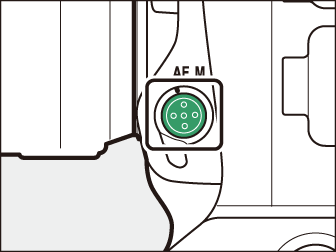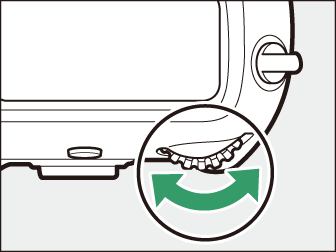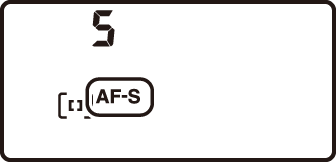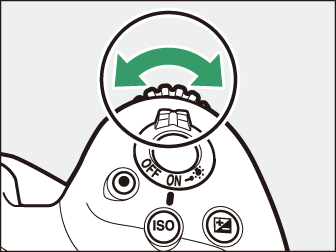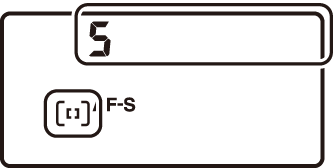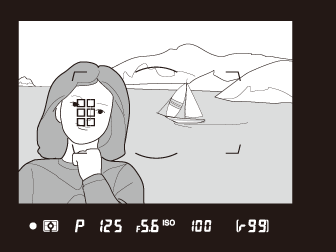The AF‑Mode Button
Choose the AF and AF‑area modes. The AF mode determines how the camera focuses in autofocus mode, the AF‑area mode how the camera selects the focus point for autofocus.
Choosing an AF Mode
Hold the AF‑mode button and rotate the main command dial. The options available vary with camera settings.
|
|
|
|
Viewfinder Photography
During viewfinder photography, the selected AF mode is displayed in the top control panel and viewfinder.
|
|
|
|
Option |
Description |
|
|---|---|---|
|
AF‑S |
[] |
Use with stationary subjects. Focus locks while the shutter-release button is pressed halfway. |
|
AF‑C |
[] |
For moving subjects. The camera adjusts focus continuously in response to changes in the distance to the subject while the shutter-release button is pressed halfway. |
Live View Photography and Filming
During live view photography and filming, the selected AF mode is displayed in the
monitor.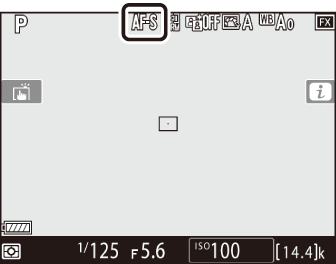
|
Option |
Description |
|
|---|---|---|
|
AF‑S |
[] |
Use with stationary subjects. Focus locks while the shutter-release button is pressed halfway. |
|
AF‑F |
[] |
For moving subjects. The camera adjusts focus continuously in response to changes in the distance to the subject until the shutter-release button is pressed halfway. Focus locks while the shutter-release button is pressed halfway. |
Choosing an AF‑Area Mode
Hold the AF‑mode button and rotate the sub-command dial. The options available vary with the AF mode.
|
|
|
|
Viewfinder Photography
The selected AF-area mode is displayed in the top control panel and viewfinder during viewfinder photography.
|
|
|
|
Option |
Description |
|---|---|
|
[] |
The camera focuses on a point selected by the user.
|
|
[]/[]/[]/[ |
The camera focuses on a point selected by the user; if the subject briefly leaves the selected point, the camera will focus based on information from surrounding focus points. Dynamic-area AF is available when AF-C is selected for autofocus mode.
|
|
[] |
The user selects the focus point; while the shutter-release button is pressed halfway, the camera will track subjects that leave the selected focus point and select new focus points as required. 3D-tracking is available when AF-C is selected for autofocus mode.
|
|
[]/[]/[] |
The camera focuses using a group of focus points selected by the user.
|
|
[] |
The camera automatically detects the subject and selects the focus point. If a face
is detected, the camera will give priority to the portrait subject. |
-
When [] or [] is highlighted, you can adjust the width of the custom focus group by holding the AF-mode button and pressing 4 or 2. Press 1 or 3 to choose the height. The height and width are shown in the top control panel.
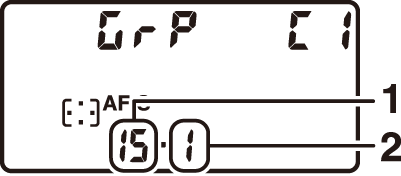
1 Width (number of focus points)
2 Height (number of focus points)
-
If you keep your eye to the viewfinder while choosing the number of focus points, you can preview the shape of the selected custom focus group.
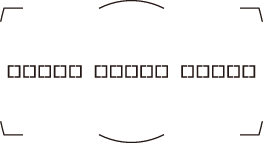
-
The number of focus points can also be selected using Custom Setting a10 [].
Live View Photography/Movie Recording
The selected AF-area mode is displayed in the monitor during live view photography
and filming.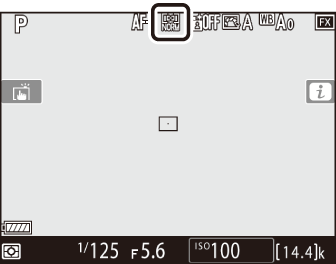
|
Option |
Description |
|
|---|---|---|
|
! |
[] |
The camera automatically detects and focuses on portrait subjects; the selected subject is indicated by a yellow border. If multiple faces (up to a maximum of 16) are detected, you can choose a subject using the multi selector.
|
|
5 |
[] |
As for [] except that the camera focuses on a wider area. |
|
6 |
[] |
The camera focuses on a point selected by the user. |
|
n |
[] |
Position the focus point over your subject and press the center of the multi selector; the focus point will track the selected subject as it moves through the frame. To end tracking, press the center of the multi selector again.
|
Manual Focus-Point Selection
When an option other than [], [], or [] is selected for AF-area mode, you can select the focus point manually. Press the
multi selector up, down, left, or right (1342) or diagonally to select the focus point.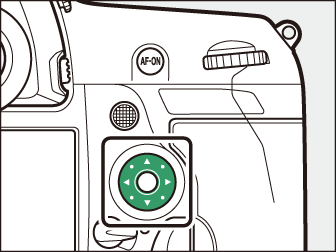
Focus-point selection can be locked by rotating the focus selector lock to the “L” position. Focus-point selection can be re-enabled by rotating the lock to I.